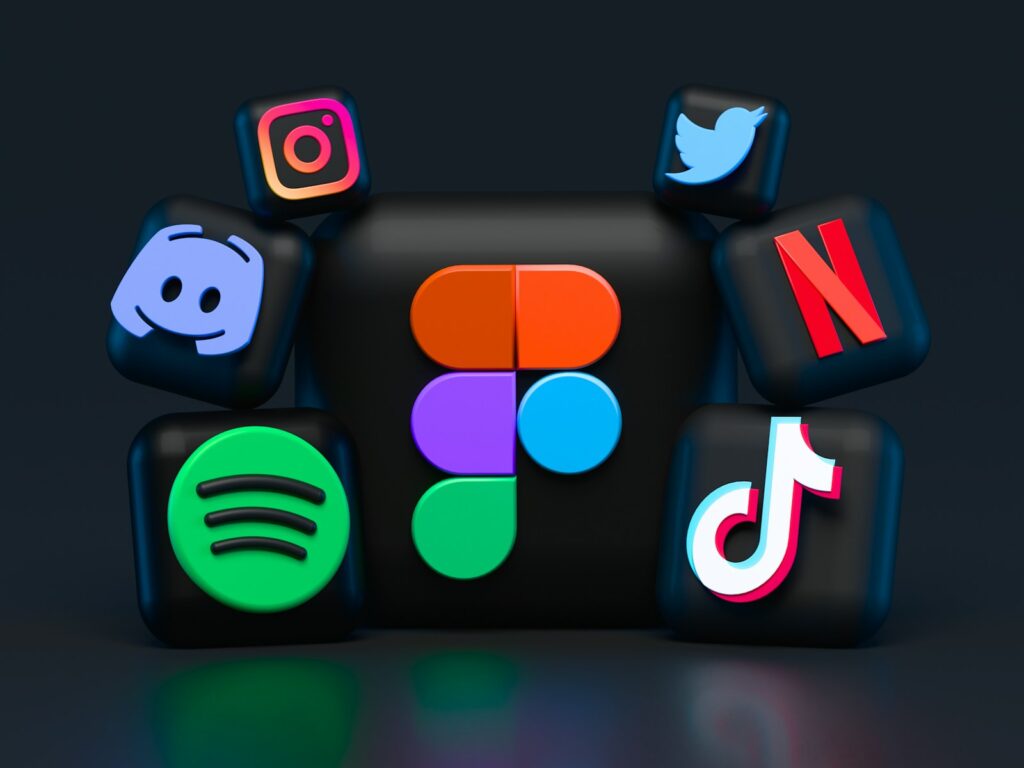
Recent studies have shown that the average adult in the US spends upwards of seven hours engaging with online content daily. This may sound extreme, but when you include podcasts, YouTube, social media, and blogs, its more believable.
Many people treat their smartphones as entertainment and information centers in 2024. Effectively these devices have become portals to the world, necessities in our increasingly isolated lifestyles.
This provides both challenges and opportunities to marketers, who need to adopt an omnichannel approach to maximize consumer touchpoints and keep their brands at the forefront of customers’ minds. According to Deloitte’s 2023 Retail Industry Outlook, as reported by Mediatool, almost 80% of media executives saw the omnichannel approach as providing the best opportunity for success.
Why is omnichannel the best strategy for success?
So, what makes this the right approach for the 2020s? There are several reasons brands both large and small should consider spreading their marketing spend across multiple channels:
1: It increases exposure significantly
Even after the abolition of third-party cookies that allowed brands to track individual customers’ online journey, it’s still advantageous to increase the number of opportunities for users of YouTube, Instagram, LinkedIn, or TikTok to encounter your brand.
Perhaps a customer has been browsing jewelry, using a search engine. They have Facebook open too. An ad server delivers your brand’s page, which immediately links to an Instagram feed beautifully illustrating your products. Later, the customer is browsing TikTok, where an interstitial ad flashes into their For You Page, reminding them once more of your brand.
A potential customer is far more likely to consider a purchase if primed in this way.
2: It’s cost effective
Rather than spending a vast amount of money on expensive print, environmental, or TV advertising, clever use of social media channels can spread a little money a long way. The buy in for social media advertising is comparatively low.
You can set a specific budget and measure your CPC (cost per click), CTR (click-through rate) or other metrics to ensure you get a good return on investment.
3: It increases influence and furthers brand identity
By using a pool of influencers across multiple channels, you increase your brand’s champions to include a potential pool of millions of followers. If you can align your campaign or product with a trending topic, then superlative success can be yours.
Consider Red Bull’s stellar achievements with both its YouTube page (14.5 million subscribers), Instagram account (over 20 million followers) and Facebook page (49 million followers). The Austrian energy drink brand has become synonymous with high octane events, both amateur and professional, generating a profusion of content it can spread across a wide range of channels. These, alongside it’s more conventional (but amusing) “Red Bull gives you wings” TV commercials have constructed a rock-solid brand identity.
4: If done well, it generates plenty of content
Content is key to the omnichannel approach. After all, if you have a LinkedIn blog, a podcast, and several social media accounts to cover, you’ve created a huge demand for content, which you must keep supplying regularly.
The good news is that, with the right approach, this ought to be manageable for most brands. Here’s one workflow example that could satisfy several marketing channels:
- Film and record a podcast to help promote your SaaS product with a fun, informative conversation with an industry thought leader.
- Put the edited podcast audio online on your site, as well as making it available to RSS feeds, and use the edited video footage for YouTube.
- Take clips from the video for Instagram and Facebook reels, plus TikTok.
- Grab stills and quotes for X and Instagram, as well as ad campaigns.
- Have the audio auto-transcribed and hire a writer to turn it into a LinkedIn article.
This way, you’ve taken one piece of media and created content for eight individual channels (including paid advertising). Obviously, you don’t have to pursue every social media channel, but two or three should be quite manageable for one or two employees to handle.
5: It puts your content into customers hands, everywhere
As well as achieving a wide reach demographically and geographically, a good omnichannel approach will ensure your content can be viewed, read, or listened too on desktop computers, laptops, smartphones, smart watches, and tablets.
This means you can place your brand in front of potential customers when they are travelling, resting, having lunch, working, or with friends. Here are some startling statistics about mobile device usage, for illustration:
- The average daily usage of a mobile phone in the US is expected to hit 279 minutes in 2024.
- 46% of Americans estimate their daily usage of smartphones at between four and five hours.
- In the US, over 26% of internet users own a smart watch (80.9 million people).
- 239 million Americans used some form of social media in January 2024.
This means that content optimized for mobile devices and smart watches can reach a significant number of people. It also helps maintain velocity (the speed and regularity of brand messaging).
As content management platform Hygraph put it, “Velocity is crucial to gaining competitive advantages. Brands in the modern day require the ability to respond to market trends promptly, optimize customer journeys, and differentiate through rapid, relevant content delivery.”
You need a strategy to go omnichannel
Of course, with something as intricate as managing four or five marketing channels at once, you need a robust strategy. Adopting an ad hoc approach is a recipe for disaster. Remember, it’s not just about posting content on a regular schedule, it’s also about engaging actively with subscribers and followers, and that takes time and person power.
Contentstack recently created a 6-step process I think is highly salient. In brief it goes like this:
- Goal Setting. Think hard about what you’d like to achieve. Are you building awareness of a brand? Launching a new product, or trying to appeal to a different audience? Or are you simply looking for newsletter sign-ups? Whatever your goals, you’ll select a different set of priorities and a different mix of channels.
- Audience Targeting. To address these goals, where will you find your audience? For Gen-Z, it’s TikTok or Twitch. Millennials can be found on Instagram and Gen X-ers are still using good old Facebook. Beyond specific channels, you can search for related brands, specific interests, geographical areas, et cetera. Find out where your audience is, and what it likes, and you’ll begin to shape your content strategy.
- Brand Voice. Yes, you want to give your customers what they want, but you also need to develop a unique brand voice. Think Lululemon, Patagonia, or Red Bull. We know what these brands stand for. In the overlap between consumer desire and your brand’s values is your perfect target market. You’ll want to create a “brand bible” to guide all content creators to ensure consistency of tone.
- Channel Selection. You probably don’t have the budget to do it all, so choose a few channels as priority. SaaS brands might choose LinkedIn and YouTube to focus upon, while a games company might head straight for Twitch and TikTok. Meet your customers where they already live, and your content will have the biggest impact.
- Stay Responsive. Once you’re posting regularly, stay on top of trends and developments in social media. Perhaps there’s a trending topic or season you can latch onto. Maybe a customer has a piece of useful feedback that can spark a conversation. Or have you a blooper from your video podcast that might go viral? Depending on your brand tone of voice, it often pays to be very direct and engaged with followers on your channels, so make sure you have the personnel to interact.
- Be Forward Focused. Keep one eye on your current strategy, and another on what’s new and hip. Personalization, automation, and AI are big at present – how can you use these tools and technologies to further your omnichannel campaigns?
By taking a thoughtful and methodical approach to developing your strategy, you’ll have the resources and creativity you need to feed those content channels and improve those conversion rates.
The ten commandments of omnichannel marketing!
Just for fun, let’s chisel those dos and don’ts on stone tablets:
[create an illustration for this?]
- Thou shalt know thy customer’s preferred channels.
- Thou shalt not bore followers or create overly sales-y content.
- Thou shalt post on a regular, predictable schedule.
- Thou shalt follow trends and seize the zeitgeist.
- Thou shalt research keywords and trending hashtags.
- Thou shalt remain consistent in brand style and voice.
- Thou shalt use analytics to monitor content engagement.
- Thou shalt automate whenever possible.
- Thou shalt hire talented (and human) content creators.
- Thou shalt partner with social media influencers.
As we’ve seen, omnichannel marketing is challenging, but comes with huge potential rewards. In terms of promoting your brand identity, securing fans and followers, and increasing conversions, it’s very much the preferred strategy in 2024.
——-
If you want to read more about how to leverage social media and enhance your brand identity, why not check out my other blog articles, or all-star podcasts?


Leave a Reply